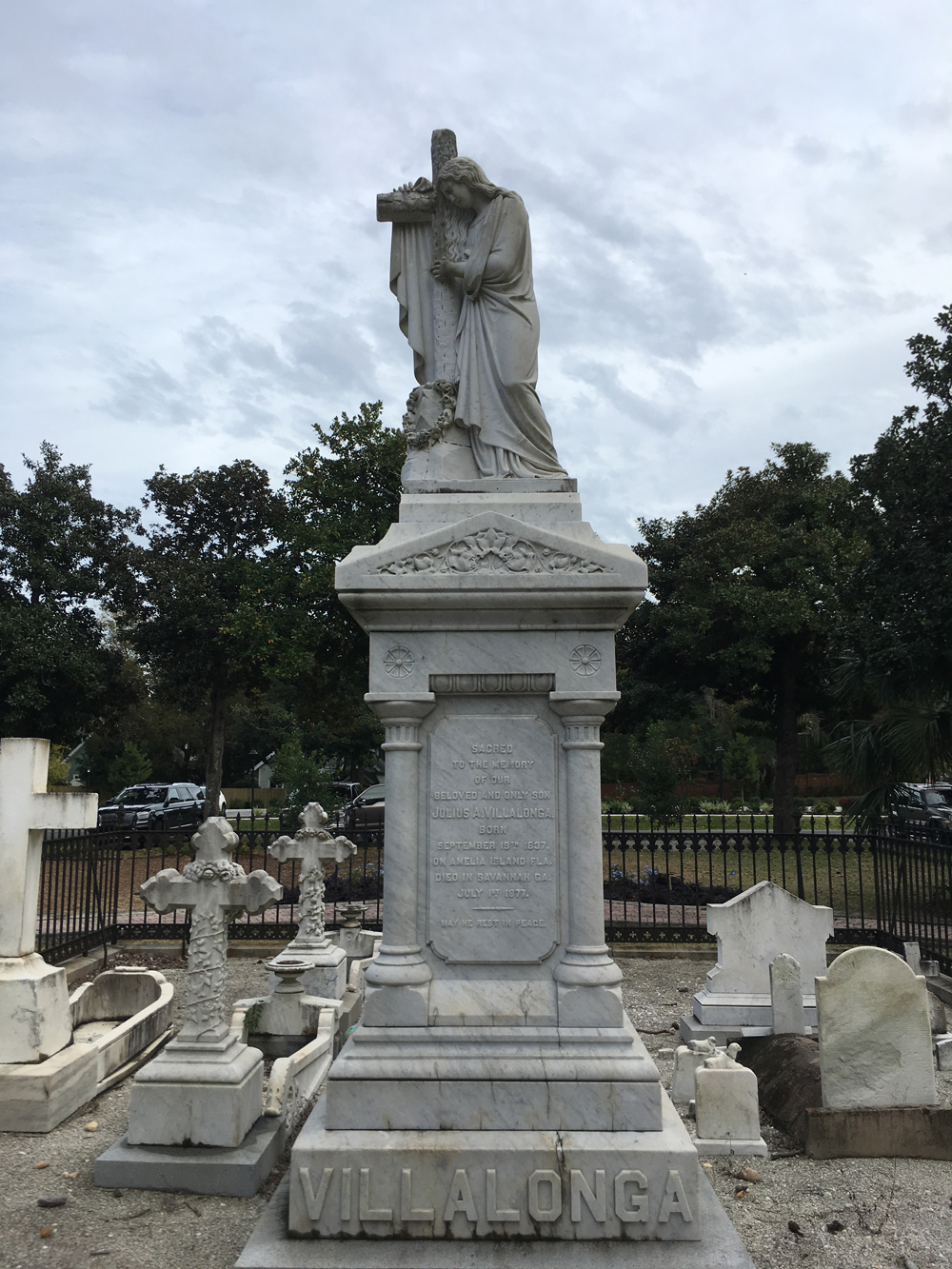
The Fernandez Reserve
April 25, 2023by Susan Martin
People familiar with the history of Amelia Island may know the name Mary Mattair, the woman who immigrated to Florida during British occupation with her husband and two young children in the early 1780s. Widowed shortly thereafter, Mary managed to procure a grant of five acres on the bluff of the Amelia River where Old Town now stands.
When the Revolutionary War ended and the Second Treaty of Paris was signed in 1783, Spain regained control of Florida and there was an exodus of British citizens from the area. The Spanish Census of 1787 shows ONLY Mary and her two children as residents of Amelia Island. The census translates to: “Native of Virginia; Protestant; widow with one son and one daughter; profession farmer and laundress; has three horses and farms some five acres of land.”
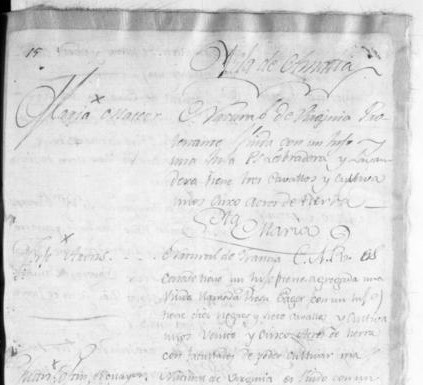 1787 Census of East Florida British residents. Note Amelia Island (“Isla de Amalia) at the top with only Mary Mattair (“Maria Mateor”) listed underneath. The following place heading is St. Marys (“Sta Marico”). Library of Congress, East Florida Papers. East Florida papers: Census Returns, -1814; -1814. – 1814, 1784. Manuscript/Mixed Material. https://www.loc.gov/resource/mss19398.mss19398-148_0197_0548/?sp=144&st=image&r=0.392,-0.023,0.644,0.409,0.
1787 Census of East Florida British residents. Note Amelia Island (“Isla de Amalia) at the top with only Mary Mattair (“Maria Mateor”) listed underneath. The following place heading is St. Marys (“Sta Marico”). Library of Congress, East Florida Papers. East Florida papers: Census Returns, -1814; -1814. – 1814, 1784. Manuscript/Mixed Material. https://www.loc.gov/resource/mss19398.mss19398-148_0197_0548/?sp=144&st=image&r=0.392,-0.023,0.644,0.409,0.
While the census-taker listed Mary and her family as the only residents, they were likely not alone. The port was important for both Spanish and English shipping activity and was likely surrounded by businesses and other landowners, even if the island wasn’t their primary place of residence.
According to a testimony by Juan Paredes in 1807, Mary Mattair was established on Old Town (in Paredes’s words “on the land now occupied by the encampment of the army,” i.e. Fort San Carlos) in 1784. He continues, “In exchange for this land Maria Mattair was given the Naranjal by the Spanish government. She continuously cultivated same for 19 years and lost much during the rebellion when the buildings were burned by order of the government.” Naranjal (“Orange Grove”) was a piece of land “on the mainland opposite Amelia Island.” According to Parades and another contemporary, Santos Rodriguez, Mary Mattair continued on Naranjal until 1803 and the plantation was “well known for its hospitality to all Spanish people.” Previously published sources place her death at 1790, without citation.
In 1793, her daughter Mary (Maria), married 27-year old Domingo Fernandez, a Spanish harbor pilot and gunboat captain at Old Town. Their holdings grew as Domingo received land grants in reward for his services during his career.
By 1807, they had assembled land, through purchases and additional grants, to create ‘Yellow Bluff Plantation’ in the area now occupied by much of the City of Fernandina Beach. It was the largest Land Grant Plantation in Florida, and supplied citrus, vegetables, dairy products, and beef to the area.
Don Domingo and Mary had seven children, 5 girls and 2 boys, several of whom did not survive infancy. Their home sat on the west side of (now) N. 4 th between Broome and Calhoun, with land sloping west to the Nassau River. Behind the house was a large family burial plot. The family was prosperous, but Don Domingo died in 1833, Mary in 1846. Mary left her estate to two sons-in-law, John Villalonga (Jane Cruz Fernandez) and George Stewart (Elizabeth Fernandez).
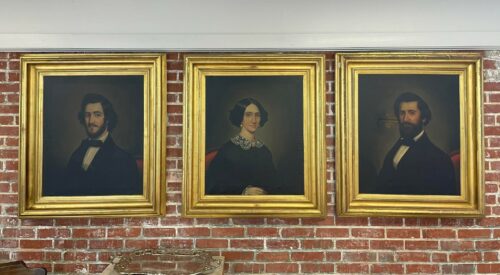
Portraits of Julius, Jane, and John Villalonga are prominently displayed in AIMH’s Baker Hall.
In 1853, Villalonga and Stewart sold Yellow Bluff Plantation to John D. Bellechase and Joseph Finegan, agents for Senator David Yulee, for $10/acre. The only land held back was the family burial plot, which now occupies the central third of the block bordered by North 4th and 5th, Broome, and Calhoun Streets.
That one-third block is now known as the Fernandez Reserve, or Villalonga Park. It is filled with lovely marble statues and memorials honoring the lives of 10 adults and 4 infants. Don Domingo and Mary Fernandez are buried there, along with John and Jane Villalonga and their 6 children (4 of whom died in infancy), George and Elizabeth Stewart and 1 adult child, and Manuela Demaraghy, John Villalonga’s aunt.
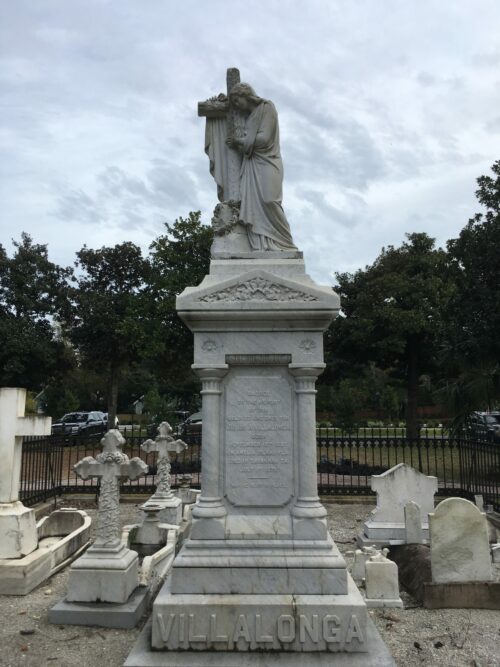
Villalonga Park.
In 1870 the Florida Town Improvement Committee, David Yulee’s company, deeded lots 1 and 6 of Block 21 (the southern third of the block) to Bishop Verot of the Diocese of St. Augustine, which built the current St. Michael’s Parish Church, in 1872. The Sisters of Mercy from Le Puy, France, birthplace of Bishop Verot, also arrived in 1872. Their contributions to the town of Fernandina are well-documented elsewhere.
In 1874, the north third of the block was deeded to those Sisters of Mercy and the St. Joseph Academy held its first classes in 1882. Their stewardship continued until the school was finally sold to the Diocese in 1961 and became St. Michael’s Academy. That school closed in 1972 and was nearly demolished at the time. It reopened in 1999.
The Fernandez Reserve sits between these two historic structures, providing an open place of quiet contemplation, except during recess for the schoolchildren. Leonilla Villalonga, the last person buried there in 1915, left $15,000 in her will for the perpetual care of the Fernandez Reserve, keeping it as one of the many treasures in modern Fernandina Beach. The land it sits on remains the last Spanish Land Grant in the State of Florida.
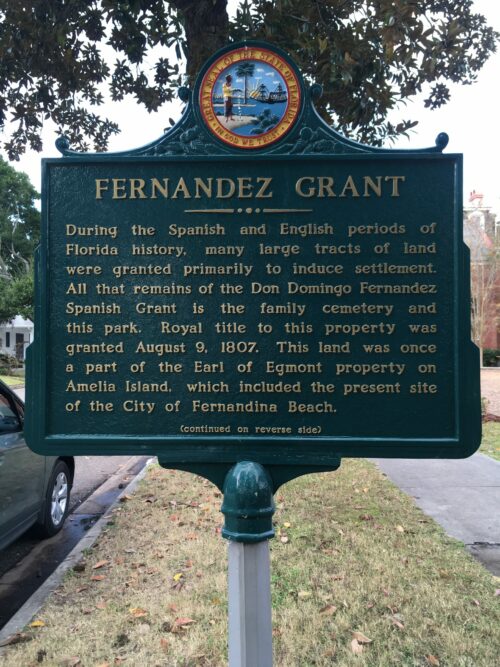
State historic marker at Fernandez Reserve.





